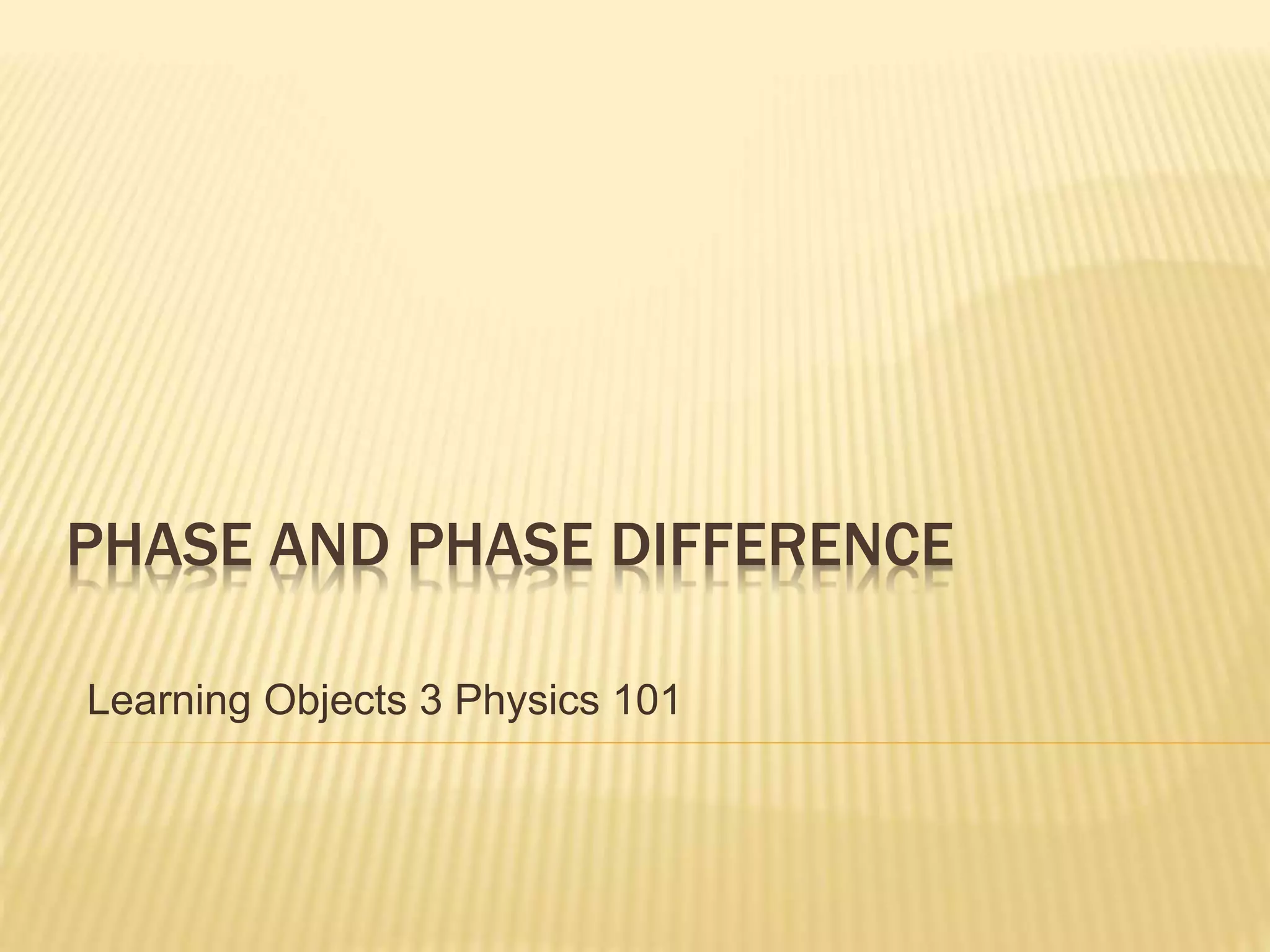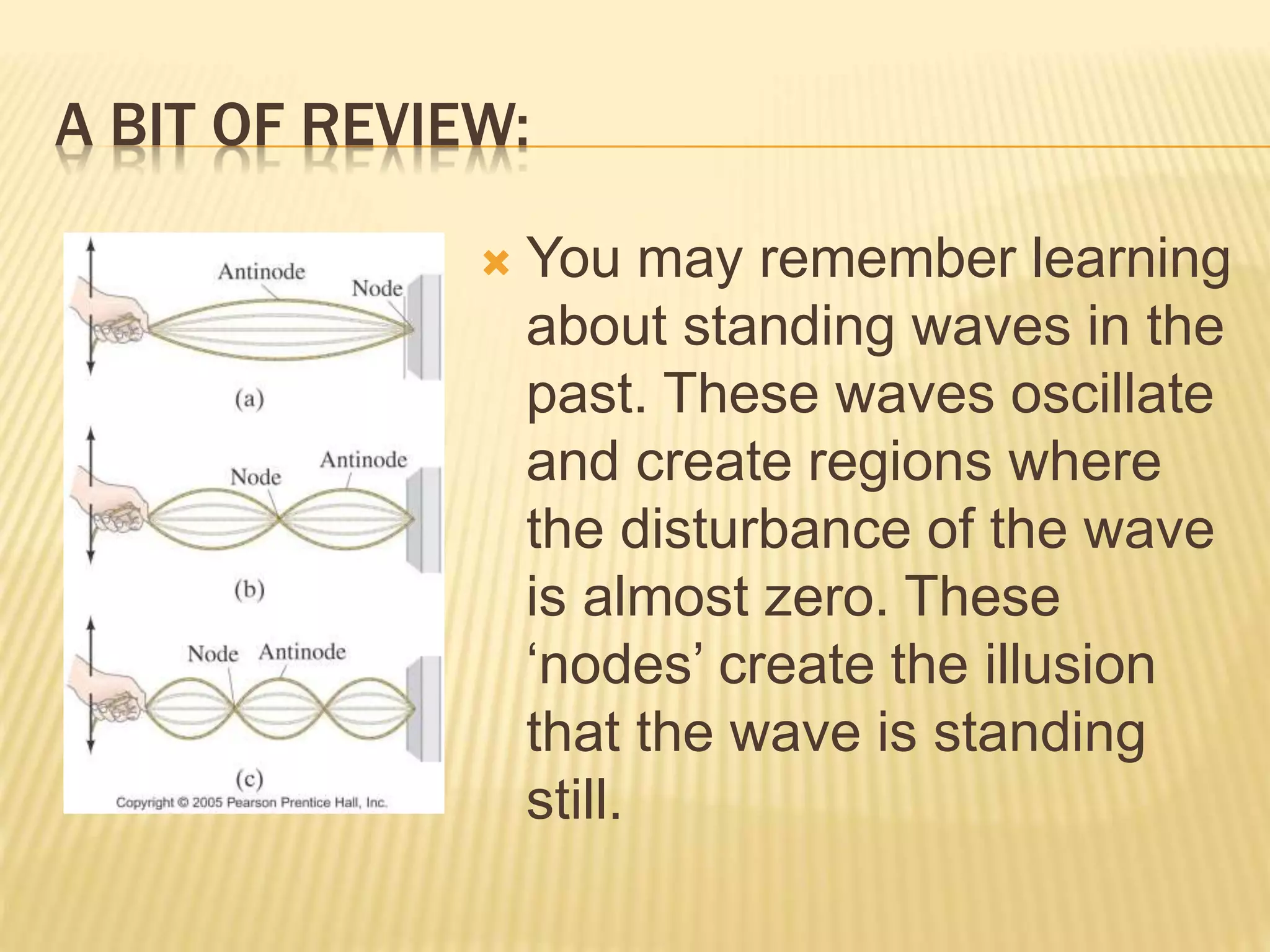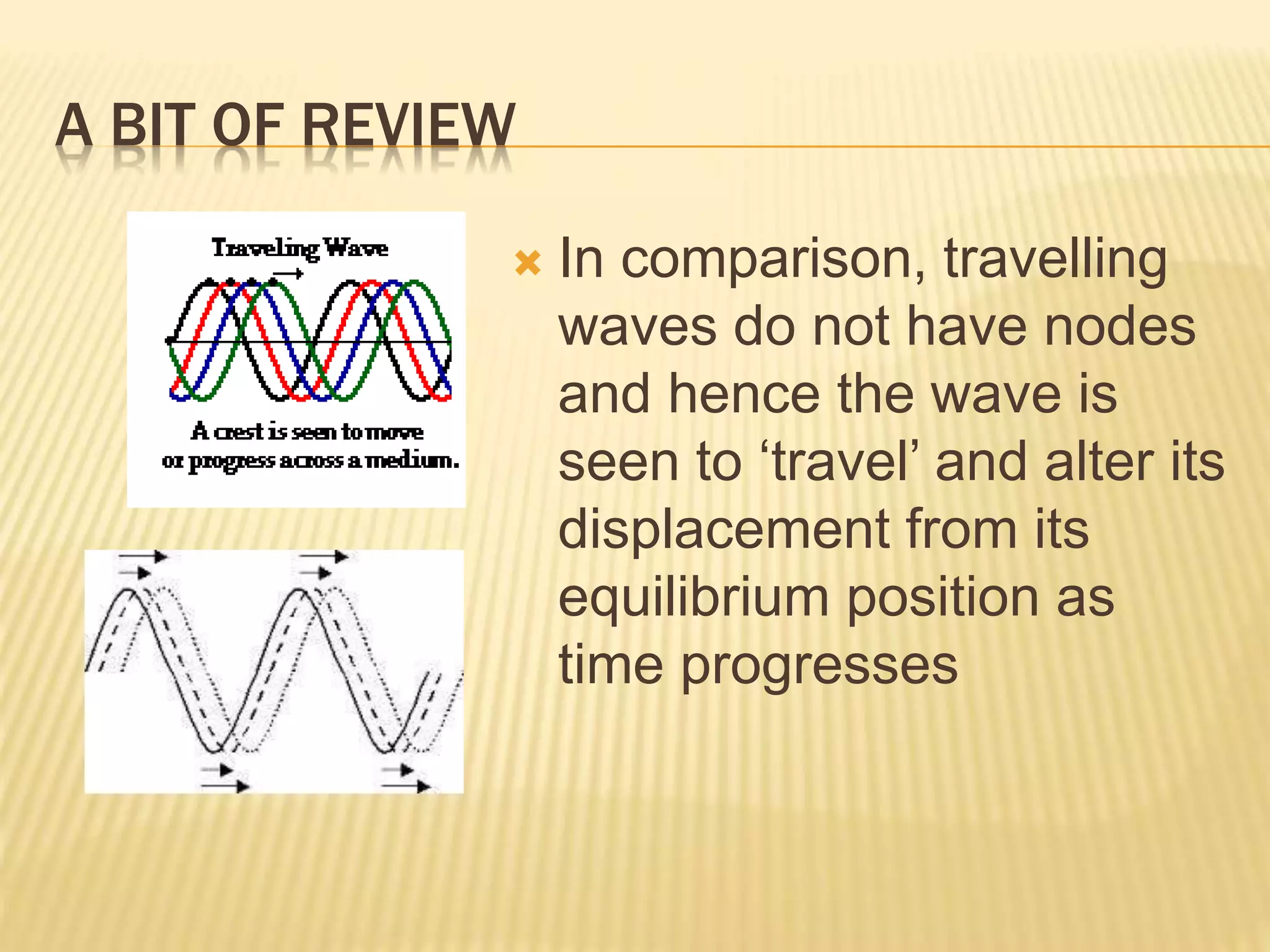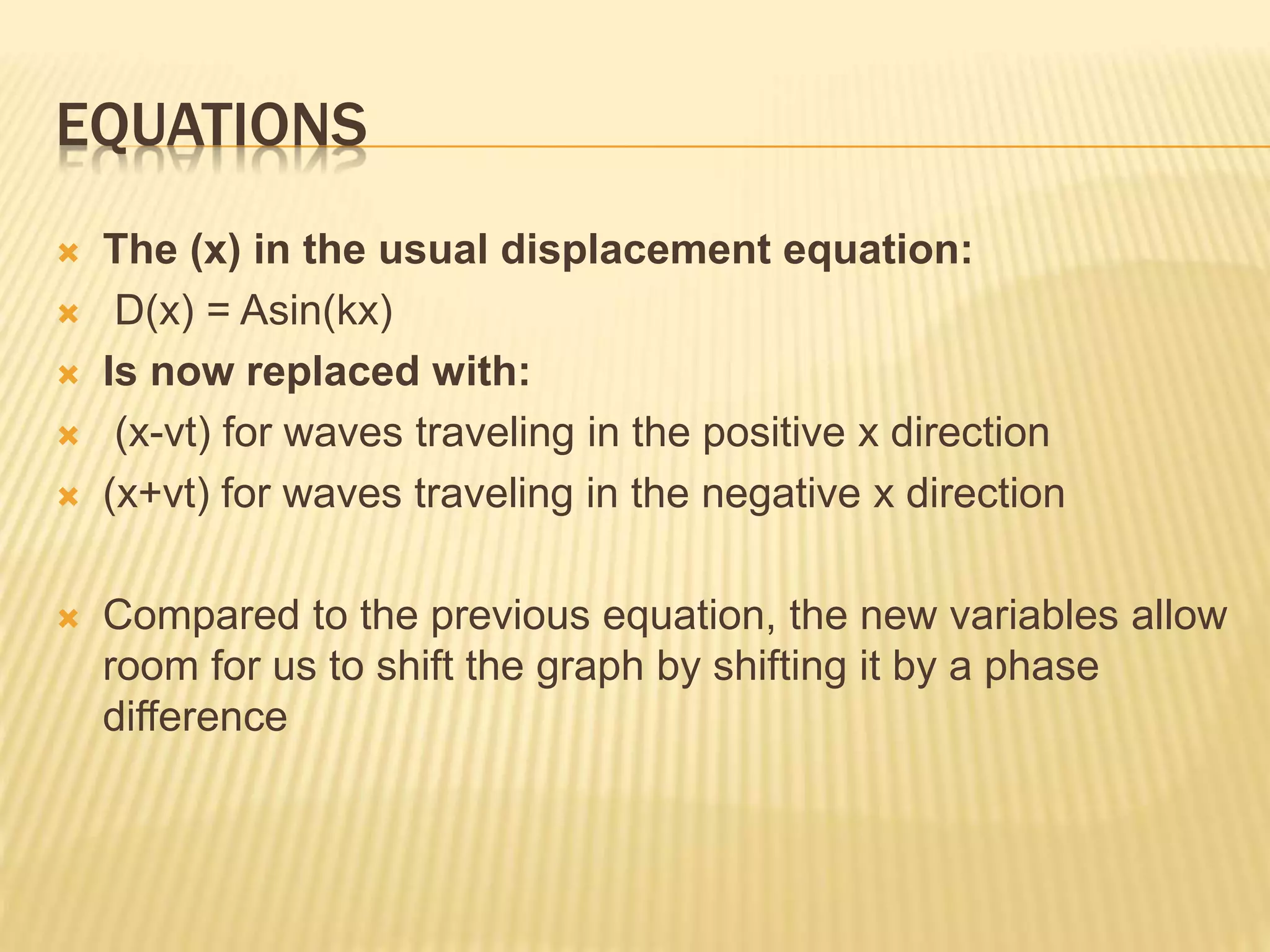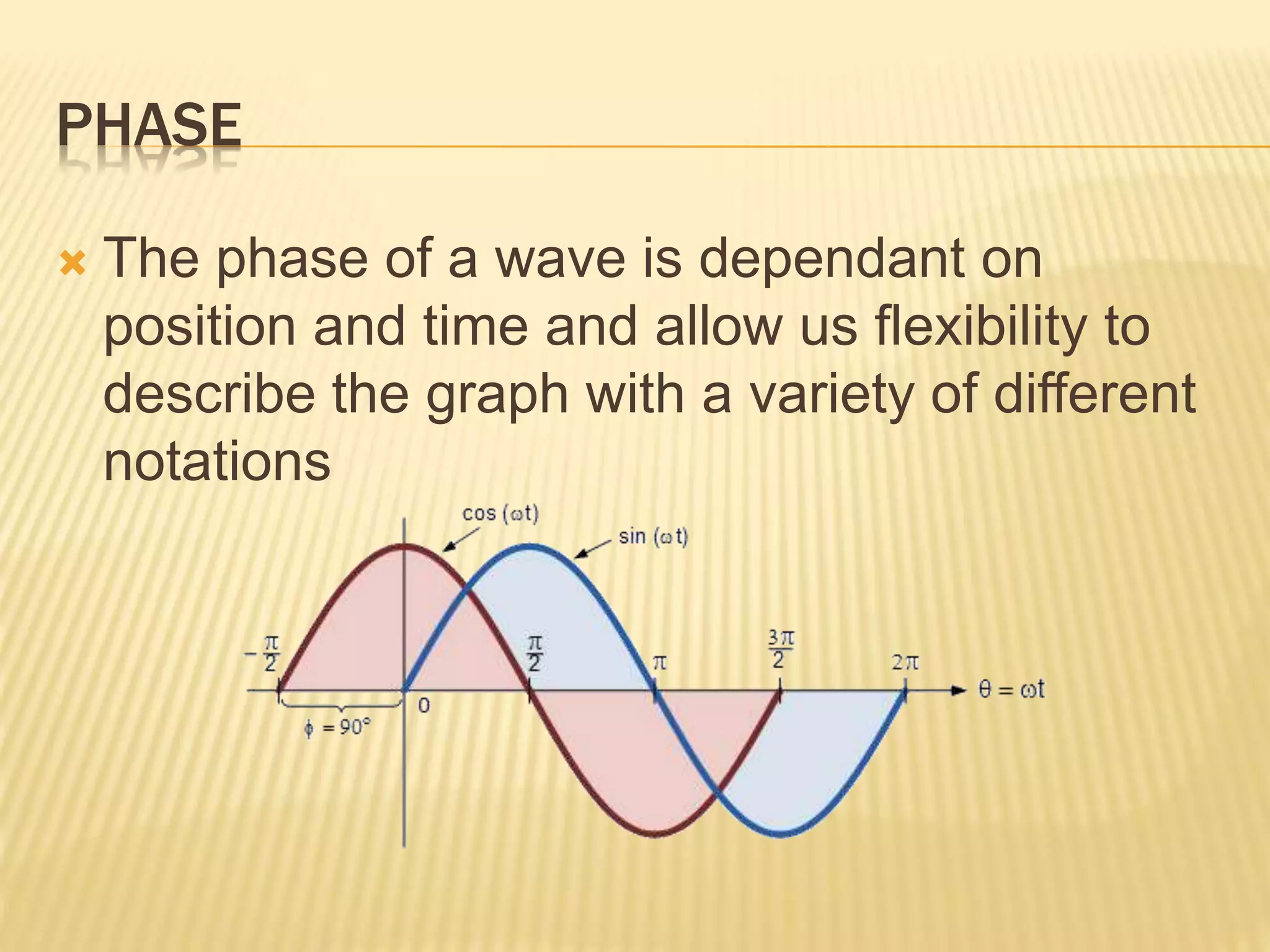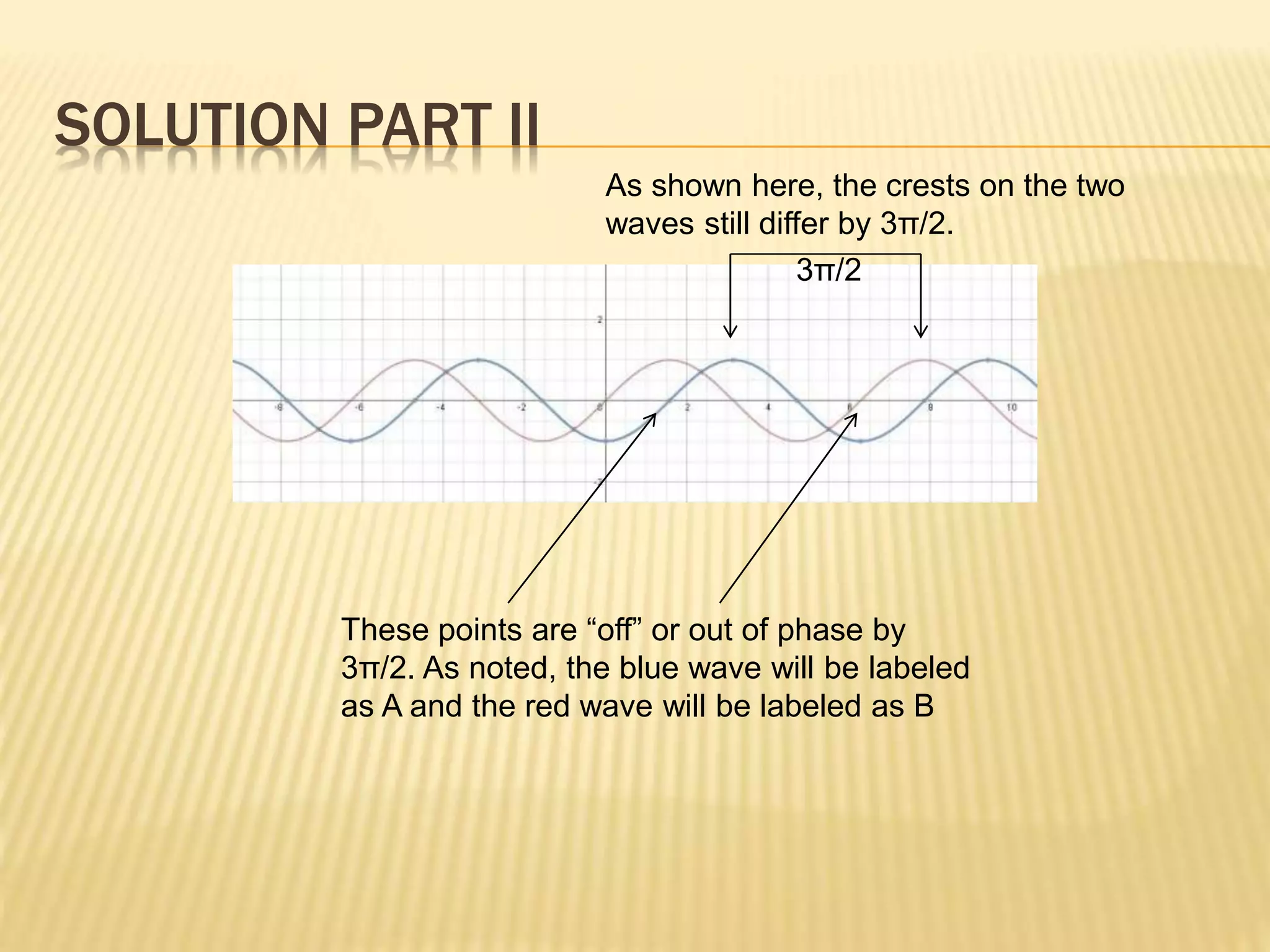This document discusses phase and phase difference in waves. It provides definitions of standing waves, which have nodes where the wave disturbance is minimal, and traveling waves, which do not have nodes. The displacement equation for traveling waves includes a term for velocity (v) to account for waves moving in the positive or negative x direction. Phase describes the wave's position and time, while phase difference is the difference in phases between two waves at the same time. A worked example shows waves A and B with a phase difference of 3π/2, and calculates their distance apart as 3λ/4, where λ is the wavelength.
